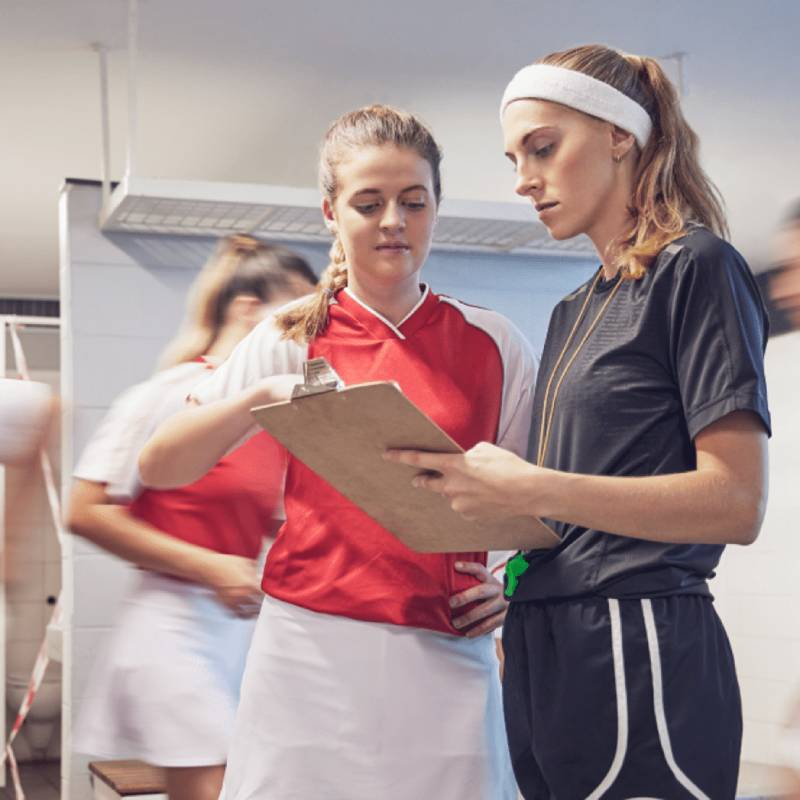How can you help your coaches prevent and manage concussions?

Concussions are a major cause of serious injury in athletes, although they can also occur during everyday activities. They need to be diagnosed as quickly as possible by a medical professional, who will be able to assess the extent of the injury and the appropriate treatment. In this context, it’s important that your coaches have a good understanding of the symptoms and the implications for school sport. This is one of the reasons why it’s essential to have an effective concussion management protocol in place.
According to the Ministry of Education and Higher Education, a good concussion management protocol should be divided into several sections.
- Recognition (reporting an incident and removing the participant)
- Observation period (verification of warning signs and symptoms)
- Gradual return to activities (intellectual, physical and sporting)
- Medical assessments (circumstances)
- Communication and collaboration
- Concussion management flow chart.
- Follow-up sheet
As a sports manager, you need to make sure that you provide your coaches with the tools and information they need, so that they have the resources they need to take the right action. As coaches are in direct contact with players, their role is mainly one of prevention, but also one of incident recognition.
What your coaches need to know
Depending on the sport, different prevention and recognition techniques can be implemented. You need to educate your coaches on the importance of these.
Teaching the right techniques
Coaches need to teach their players the right techniques and practices to make training safe, which can help reduce the risk of injury. So you can support your coaches by encouraging them to include training on proper techniques and safety in their training plans. This might include teaching players how to tackle, block and fall correctly to minimize head contact. You can also review coaches’ training plans to ensure that they follow protocol and provide the necessary training to players.
Emphasize the importance of proper equipment
Coaches must ensure that players wear the appropriate protective equipment to minimize the risk of concussion. You can support your coaches by providing them with guidelines and resources on the appropriate protective equipment for their sport, and by encouraging them to enforce its use during practices and games.
For example, coaches should ensure that all players wear properly fitting helmets, mouth guards and other padding, such as shoulder pads or rib guards, that are specific to the sport. It may also be necessary to add protective equipment if this is the first time a move is being practiced. Don’t hesitate to encourage your trainers to take extra care. For example, when practicing a new pyramid in cheerleading.
Encouraging players to report symptoms
Coaches can encourage their players to report any symptoms of concussion, such as headaches, dizziness or confusion, and to seek medical attention if necessary. Tell your coaches what to do if they experience symptoms. Provide them with the necessary documentation to help them learn more about a possible concussion. You can provide them with a questionnaire with various questions they can ask athletes in case of doubt.
Watching for signs of concussion
Coaches can be alert to signs of concussion in their players, such as changes in behavior or speech, and take appropriate action if necessary. You can provide your coaches with a detailed plan to this effect. When in doubt, preventive withdrawal is always the right thing to do, and if possible, they can send the athlete to see the school nurse.
Providing concussion education
Coaches can educate themselves and their players about the signs, symptoms and risks of concussion, as well as the importance of proper diagnosis, management and rest after a suspected concussion. To do this, it’s a good idea to provide training not only for your coaches, but also for your players, so that they have all the information they need. This will help them to identify and manage concussions quickly and effectively, and ultimately keep athletes safe.
Apply return-to-play guidelines
Coaches can follow guidelines for returning players to the field after a suspected concussion, which typically involve a step-by-step process including medical clearance, gradual return to activity and close monitoring of symptoms.
Fill in the follow-up form
Coaches must complete the follow-up sheet immediately after a suspected concussion incident. The sheet should include information such as the day of the incident, the specific symptoms the player is experiencing and any action taken in response to the incident. This information can be used to track the player’s progress and determine when it’s safe to return to play. As a sports manager, you can support your coaches by providing clear instructions and guidelines on how to complete the tracking form, and by ensuring that it is easy to consult and use.
By ensuring that these elements are respected, you are helping your coaches to successfully implement the concussion management protocol and contributing to the protection of student-athletes. It’s important to remember that concussion prevention is the best way to protect student-athletes, but when concussions do occur, it’s crucial that they are managed properly to minimize the risk of long-term effects.
Don't miss our new year-end gala organization guide!
Karl Demers



